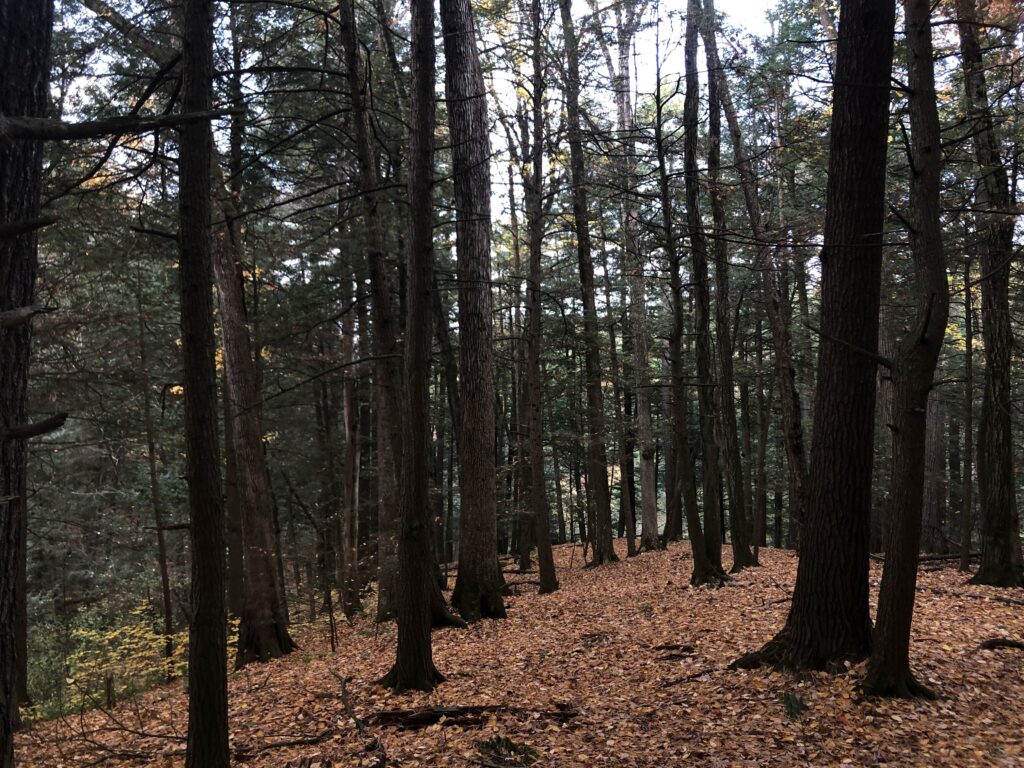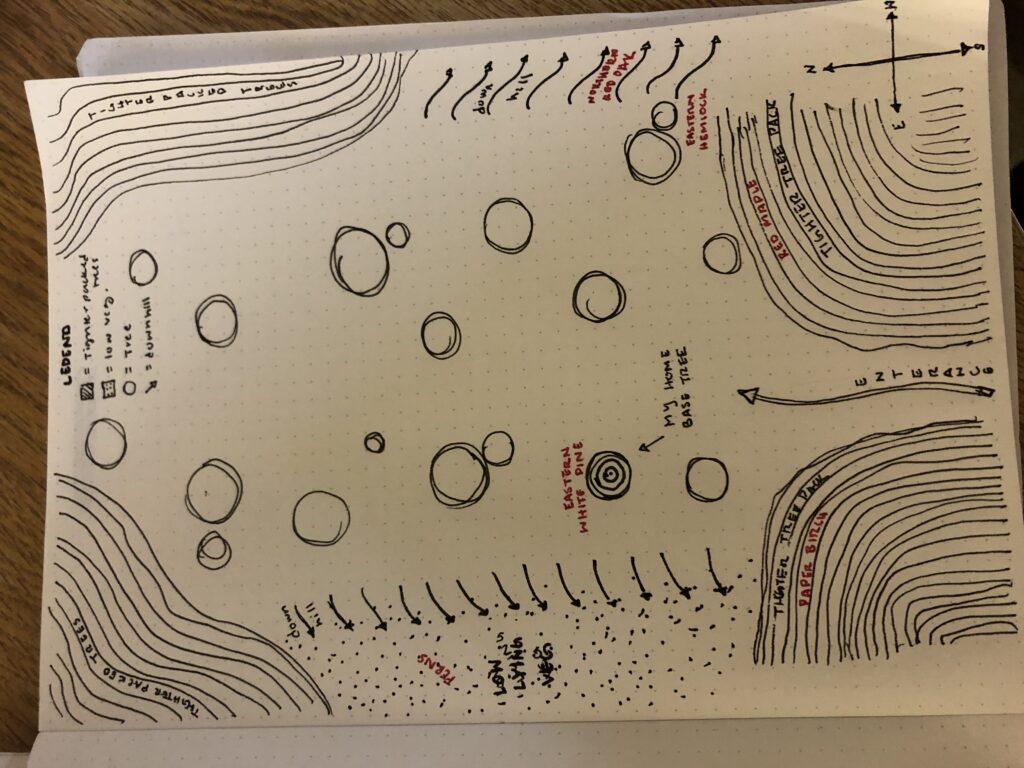This visit to my site was a very interesting one as snow has covered the general Burlington area! The tone of my place has totally shifted with the snow. It is light everywhere; the snow is doing a good job at reflecting the small amounts of daylight we are still receiving. Leaves are still falling from the few trees that have hung onto them. I noticed some white oaks with many of their yellow leaves still attached. But the pines are just as I left them, green, pointy and stable.
I choose this location because I knew that these pines would remain a representation of stability and predictability as the rest of the forest changed with the seasons. It’s also why I choose my place surrounding a tree, to increase my feeling of stability surrounding my phenology site. Within this sense of stability, I did notice a change in how I related to my place. It wasn’t as dark as it was when I first stumbled upon it. The whole area is now illuminated by snow. It feels happier and more joyful walking in with the light reflecting throughout the trees and vegetation that is still present.
This site and its placement in centennial are just an easily assessable example of the New England forests in winter, which aside from skiing I have experienced very little of. It all feels new to me even if it’s not a new phenomenon. Centennial used to be pasture land, then was miscellaneously used land for a while after it was bought by UVM. Now it is being revitalized and preserved as forest. It is used for recreation as a park and for education by UVM. It is increasingly become more and more a forest and park as time goes on. The more space that centennial is given, the more it returns to the forest it once was.

Field notes:
- Snow cover
- White oaks still have leaf’s
- Pines still look same
- Vegetation almost totally covered
- Quiet
Naturally curious
November
- Preparing for winter (building nests, food storage, denning, going dormant, migrating)
October
- Final things before winter/starting prep (molting, final eggs hatching, hibernation, migrating, etc)
September
- Summer birds start migration
- Flowering and fruiting

